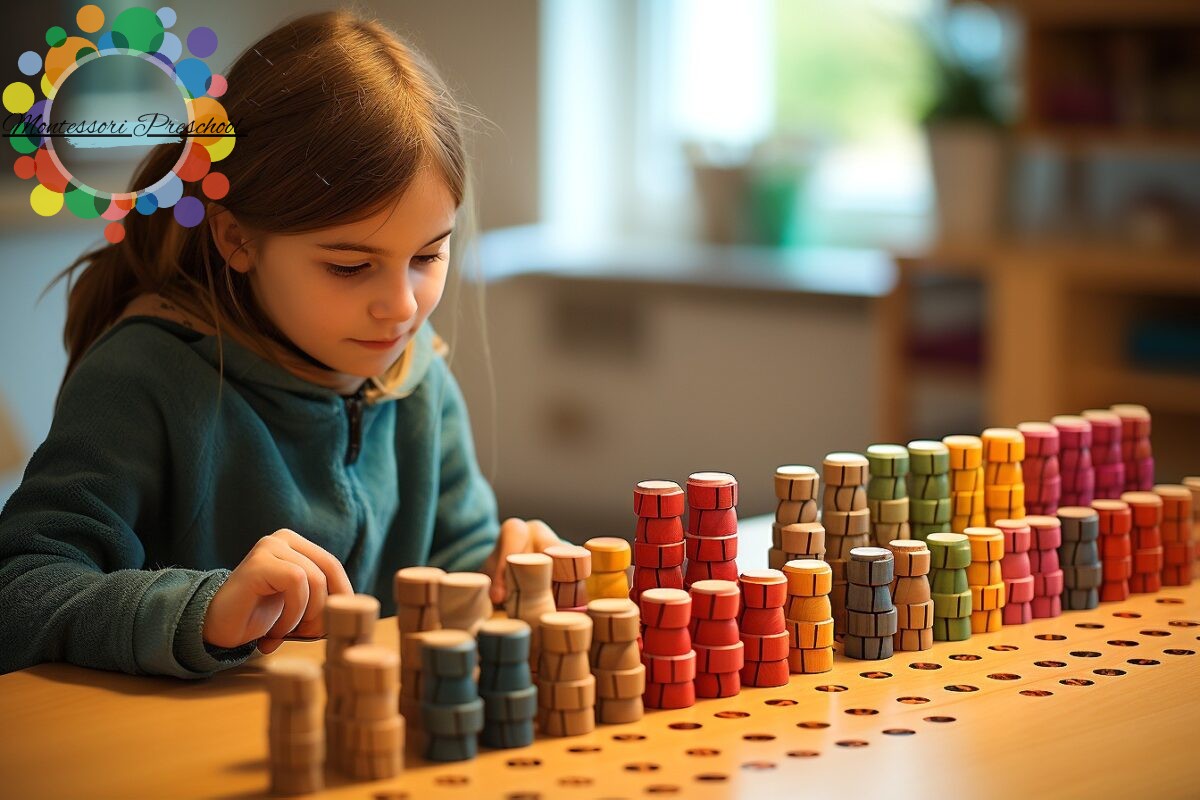
Have you ever wondered how young children can learn complex mathematical concepts with ease? The Montessori method of education provides a unique approach to math that makes learning fun, interactive, and accessible for children as young as four years old. By utilizing visual and tactile representations of numbers, this method allows children to develop a concrete understanding of quantity and explore shapes, colors, and patterns. In this article, we will explore the fascinating world of Montessori mathematics and discover how it can unlock the potential of your child’s mathematical abilities.
The Montessori Approach to Math Education
The Philosophy of Dr. Maria Montessori
Dr. Maria Montessori, an Italian physician and educator, believed that every individual has a natural inclination to create order, observe relationships, and quantify patterns. She developed the Montessori method of education based on this philosophy, which emphasizes hands-on learning, self-paced exploration, and respect for each child’s individual learning style.
Visual and Tactile Representations of Numbers
In traditional math education, children are often introduced to abstract concepts like addition, subtraction, multiplication, and division with pencil and paper. However, the Montessori method takes a different approach by providing visual and tactile representations of numbers. This allows children to physically manipulate materials and develop a concrete understanding of mathematical concepts.
Golden Beads and Number Rods
Montessori classrooms are equipped with a variety of hands-on materials, including golden beads and number rods. Golden beads represent units, tens, hundreds, and thousands, allowing children to visually and physically explore place value and learn mathematical operations. Number rods provide a visual representation of numbers from one to ten, helping children develop a sense of quantity and understand basic arithmetic operations.
Key Components of Montessori Mathematics
Geometry: Exploring Shapes and Spatial Relationships
In Montessori classrooms, geometry is introduced at an early age through activities that involve exploring shapes and spatial relationships. Children are encouraged to touch and manipulate geometric solids, construct two-dimensional shapes with various materials, and learn the names and properties of different shapes. This hands-on approach promotes a deep understanding of geometric concepts and lays the foundation for advanced mathematical thinking.
Counting and Numeral Identification
Counting is an essential skill in early mathematics education, and Montessori classrooms provide a rich environment for children to practice and refine their counting skills. Through activities like the “Number Rods” and “Spindle Box,” children learn to associate each number with a quantity and develop sequential ordering skills. Numeral identification is also emphasized, as children learn to match numerals with their corresponding quantities.
Basic Mathematical Operations: Addition, Subtraction, Multiplication, and Division
Once children have a solid foundation in counting and numeral identification, they are introduced to basic mathematical operations. The Montessori method uses materials like the “Bead Stair” and “Stamp Game” to make these operations tangible and visual. Children can physically add, subtract, multiply, and divide with beads or stamps, which helps them understand the underlying concepts before transitioning to abstract representations and pencil-and-paper calculations.
Fractions and Decimals
As children progress in their mathematical journey, they are introduced to concepts like fractions and decimals. Montessori materials, such as the “Fraction Circles” and “Decimal Board,” allow children to explore these concepts through hands-on activities. By visually manipulating fraction pieces or decimal cards, children develop an intuitive understanding of these numerical concepts and their relationships.
The Benefits of Montessori Mathematics
Hands-on Learning Experience
One of the major benefits of Montessori mathematics is the emphasis on hands-on learning. Children are actively engaged in the learning process, using their senses to explore, manipulate, and internalize mathematical concepts. This tactile experience not only makes learning fun and interactive but also helps children develop a deep understanding of abstract mathematical concepts.
Individualized Learning Pace
Another advantage of the Montessori method is its focus on individualized learning. Each child progresses at their own pace, allowing them to master concepts before moving on to more advanced material. This personalized approach ensures that children have a solid foundation in each mathematical concept and helps build confidence and a love for learning.
Concrete Understanding of Mathematical Concepts
By providing visual and tactile representations of numbers, the Montessori method allows children to develop a concrete understanding of mathematical concepts. Rather than relying solely on abstract symbols and equations, children can physically manipulate materials and see mathematical operations in action. This helps create a strong foundation for future mathematical learning and problem-solving abilities.
Integration of Math and Everyday Life
Montessori mathematics is not limited to the classroom; it extends into children’s everyday lives. Through real-world applications and practical activities, children learn to apply mathematical concepts to solve everyday problems. Whether it’s measuring ingredients while cooking or counting objects in their environment, children see the relevance and importance of math in their daily lives.
The Montessori method of mathematics offers a unique and effective approach to math education. By providing visual and tactile representations of numbers, children can develop a concrete understanding of mathematical concepts at a young age. Montessori classrooms create an engaging learning environment where children can explore shapes, colors, patterns, and numerical operations. Through hands-on activities, individualized learning pace, and real-world applications, the Montessori method unlocks the full potential of children’s mathematical abilities. Consider embracing the Montessori approach to math education and witness the joy and excitement your child experiences in their mathematical journey.





